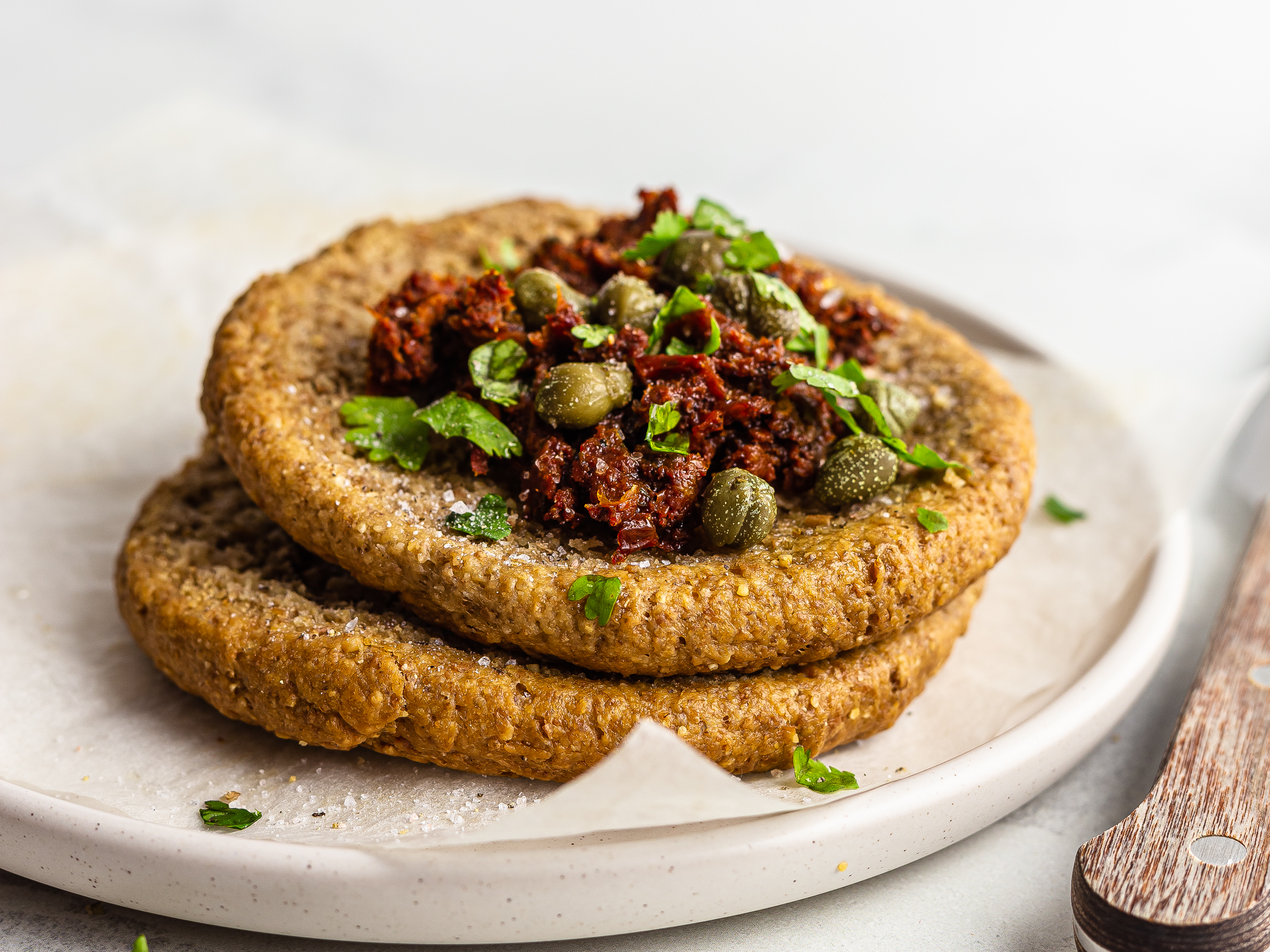Today, we'd like to share a special recipe to make unbelievably crunchy barley "bruschettas" at home. It's called barley rusk — a traditional barley crispy-bread from Crete, Greece. Even saying the word "rusk" sounds like biting on something crunchy!
The two most unique properties of this recipe are the use of barley flour and the twice-baking cooking technique.
You may know barley as one of the key ingredients used to make beer. But did you know you can mill barley into flour and bake with it? This cereal has less gluten than wheat and has a more robust flavour. In the right quantity, it can bring unique character to your bakes. Note: Although the amount of gluten in barley is low, it's still not suitable for celiacs or people intolerant to this protein.
Twice-baking is a technique designed to make food extra crispy. In this recipe, rusks are first cooked at high temperature for a crunchy crust and then at a lower temperature to make them crispy inside.
Based on our research, there are two ways to shape Cretan barley rusks:
As a long and thin baguette-shaped roll which you slice into discs
As multiple round bun-shaped rolls that you cut in half
We opted for the latter because the shape reminded us of the Friselle Pugliesi we grew up eating as kids. Happy memories!
Finding barley flour shouldn't be a problem in most countries. Our US readers should find it with ease at Walmart or Whole Foods. In the UK, not all major supermarkets have it. If you can't get it at your local grocery, you can make it yourself from pearl barley. That's how we've done it. You can read how to make barley flour at home here.
There are so many ways to enjoy these barley rusks. You can top them with salad, crumble them in greek yogurt, enjoy them plain, or spread something tasty on them. If you are into the last option, check out our sundried tomato tapenade recipe.
How do you cut Greek rusks?
There are two ways you can shape and slice the dough to make Greek rusks.
In our recipe, we portioned the dough into 130g (4.5 oz) pieces, shaped them into patties and then sliced them horizontally. To cut the dough, you can use a cake wire or a sharp knife.
Alternatively, you can shape all the dough into a single long log, like a baguette. Then, cut it into 3cm (1 inch) thick slices without cutting all the way through. This way, the individual slices are held together at the bottom during the second proving and first baking round.
Finally, slice the rusks where you have previously scored them and bake once again following our recipe above.
What type of yeast is best for these bread crisps?
You can use instant dry yeast, active dry yeast or fresh yeast to prepare the rusks dough.
They're all equivalent and yield the same results, so it's just a matter of personal preference.
Fresh yeast is sold as a block, and you have to dissolve it into lukewarm water before using it. For this recipe, swap 7g (0.2 oz) of dry yeast with 16g (0.5 oz) of the fresh one.
As the name says, active dry yeast is dry instead. Unlike fresh yeast, the yeast cells are inactive, and you need to activate them first[1]. To do so, dissolve the granules in lukewarm water and leave it to bubble up for 5 minutes.
Finally, instant dry yeast (or quick yeast) is a drier version of active yeast and it doesn't need to be activated before use. Although you can add it right away into your bowl, we always proof it first to make sure it's working well. In this process, called "blooming", you whisk the yeast granules with lukewarm water and flour. Then, wait for the mixture to bubble and rise in volume.
Can you make barley flour from pearl barley without a grinder?
Yes, you can. All you need is a sieve, a powerful blender, and a bit of patience.
First, blitz the pearl barley in your food processor until coarsely ground. Then, pass it through a fine-mesh sieve to extract the flour you got so far and set it aside.
Then, put what's left in the sieve back in the blender and repeat the blitzing and sieving step a few more times.
You can add more barley grains to the food processor until you reach the desired amount of barley flour.
By the end of the blitzing and sieving process, you're like to have some pellets of barley left. Don't worry, you can cook them exactly like pearl barley and make a tasty tabbouleh or a hearty soup.
Ingredients
| All-Purpose Flour | 100 g |
| Instant Dry Yeast | 7 g |
| Lukewarm Water | 230 mL |
| Barley Flour | 200 g |
| Wholemeal Flour | 100 g |
| Extra Virgin Olive Oil | 80 mL |
| Salt | 1/2 tsp |
| Maple Syrup (or Honey) | 1/2 tsp |
Step 1
Combine the instant dry yeast with 15 g of plain flour in a small bowl. Then, pour in 30 mL of lukewarm water, whisk well, and leave the mixture undisturbed for 5 minutes.
You'll see the yeast slowly bubbling up — this means it's active and working well.
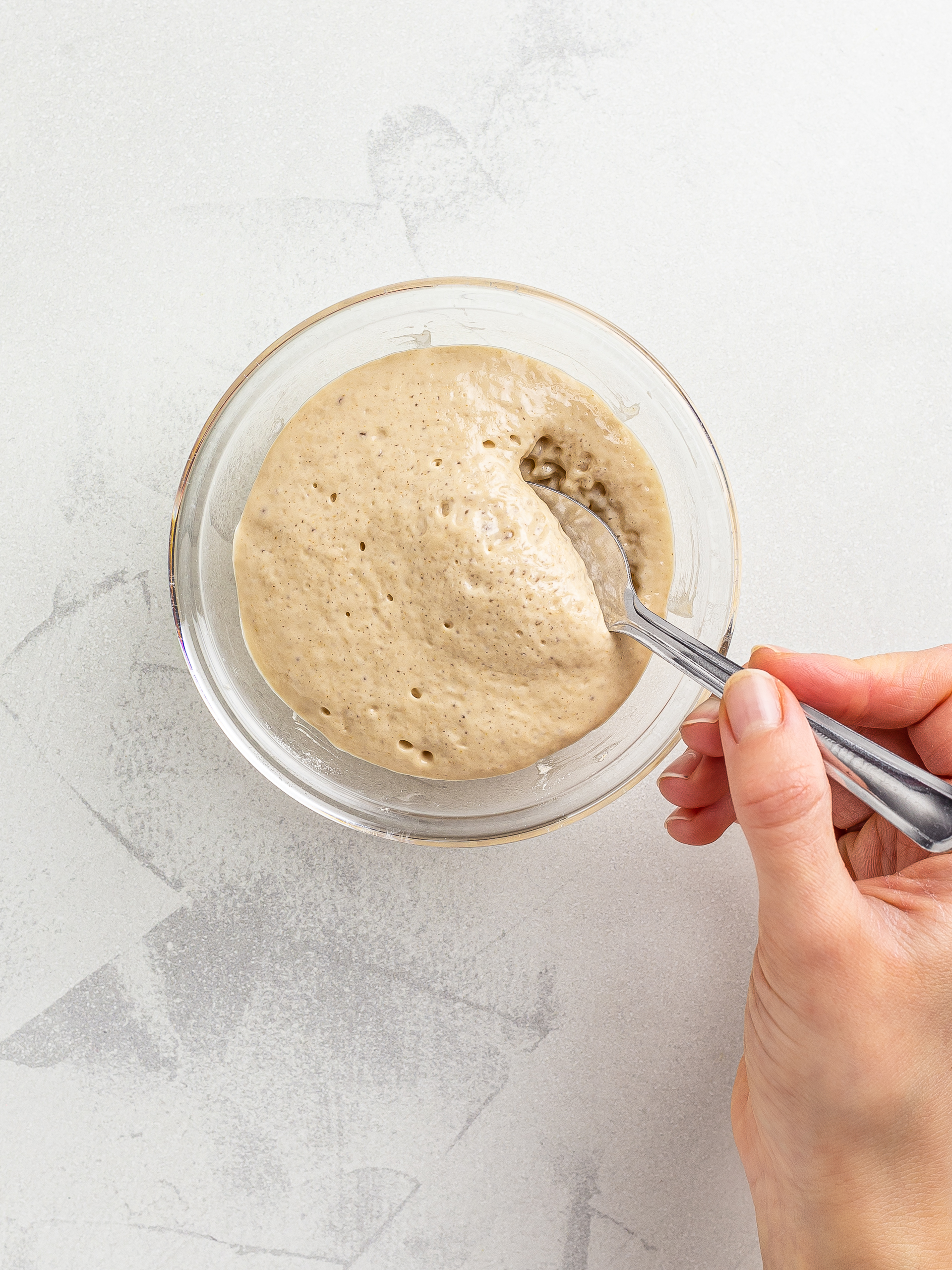
Step 2
Mix the remaining 85 g of plain flour with barley flour, wholemeal flour, and salt in another bowl (1).
Then, pour in the extra virgin olive oil, the remaining 200 mL of lukewarm water, maple syrup, and the prepared yeast mixture (2).
By the way, if you don't have barley flour, you can make it yourself. Just grind pearl barley in a powerful food processor or, better yet, a coffee grinder.
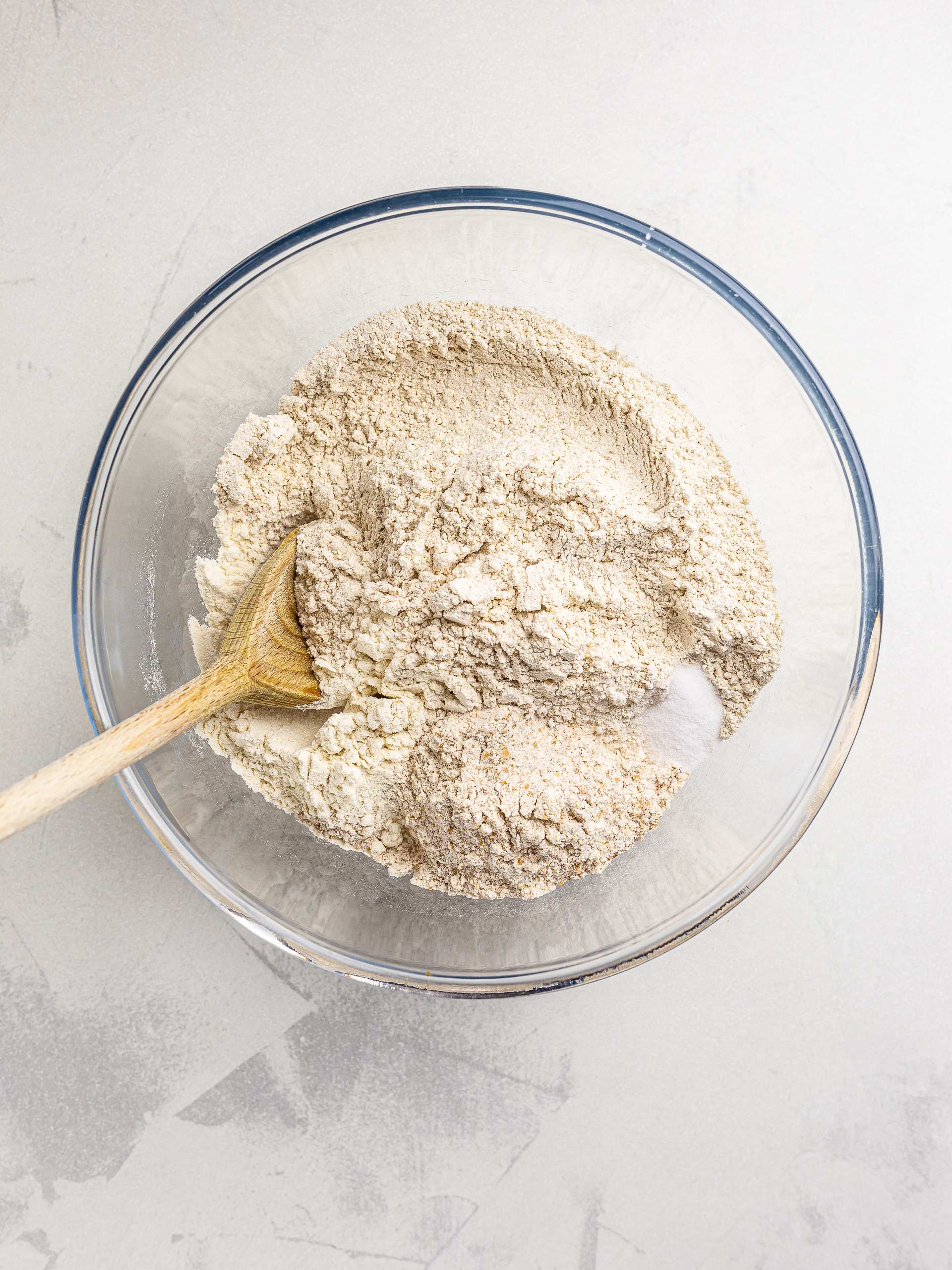
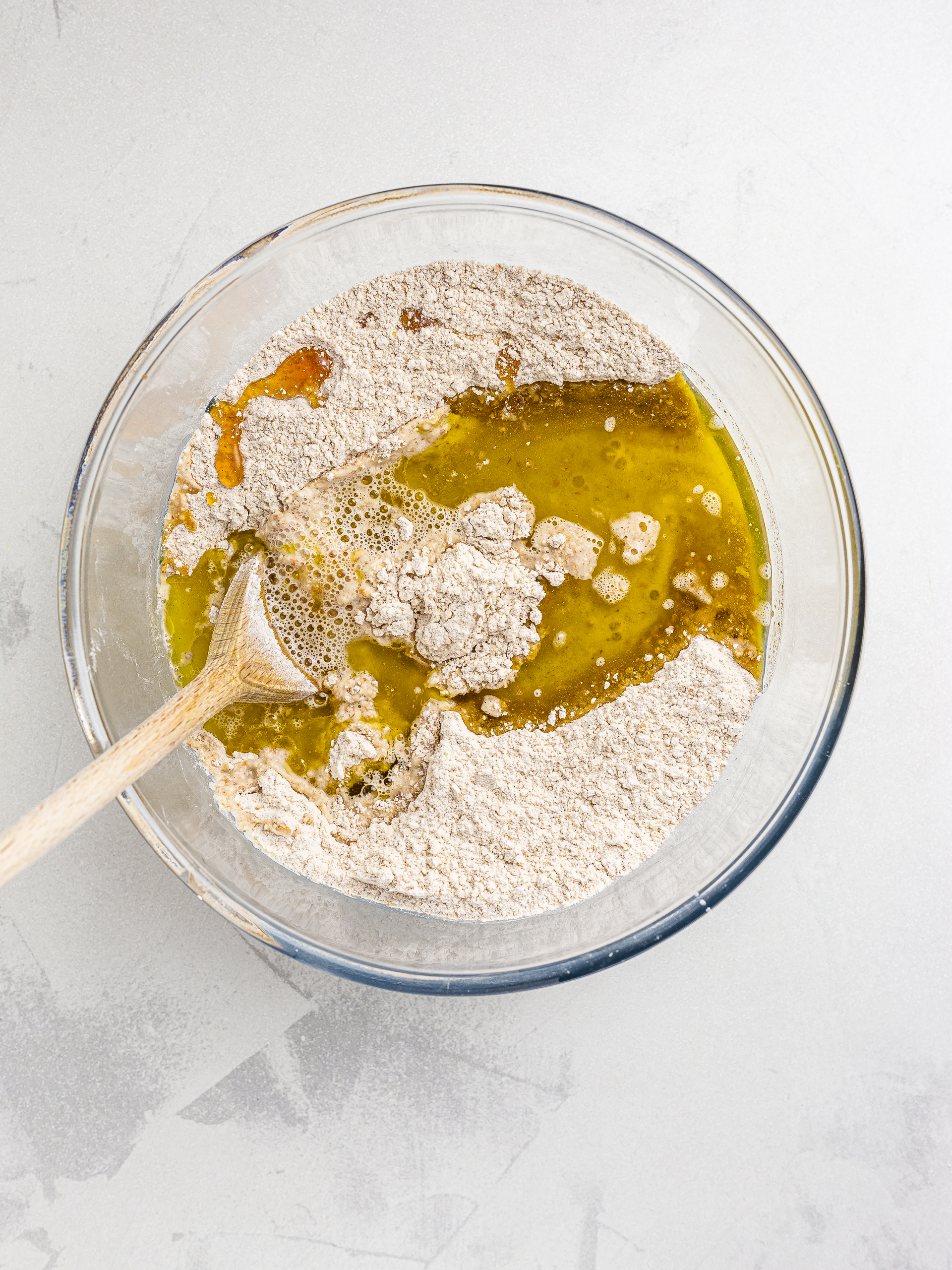
Step 3
Work the ingredients with a spatula until they come together and then transfer it onto a lightly floured surface.
Knead the dough for 5-10 minutes, pressing it down and forward with the heel of your hand, then fold it back, turn sideways, and repeat.
You should have a smooth, pliable, and slightly sticky dough.
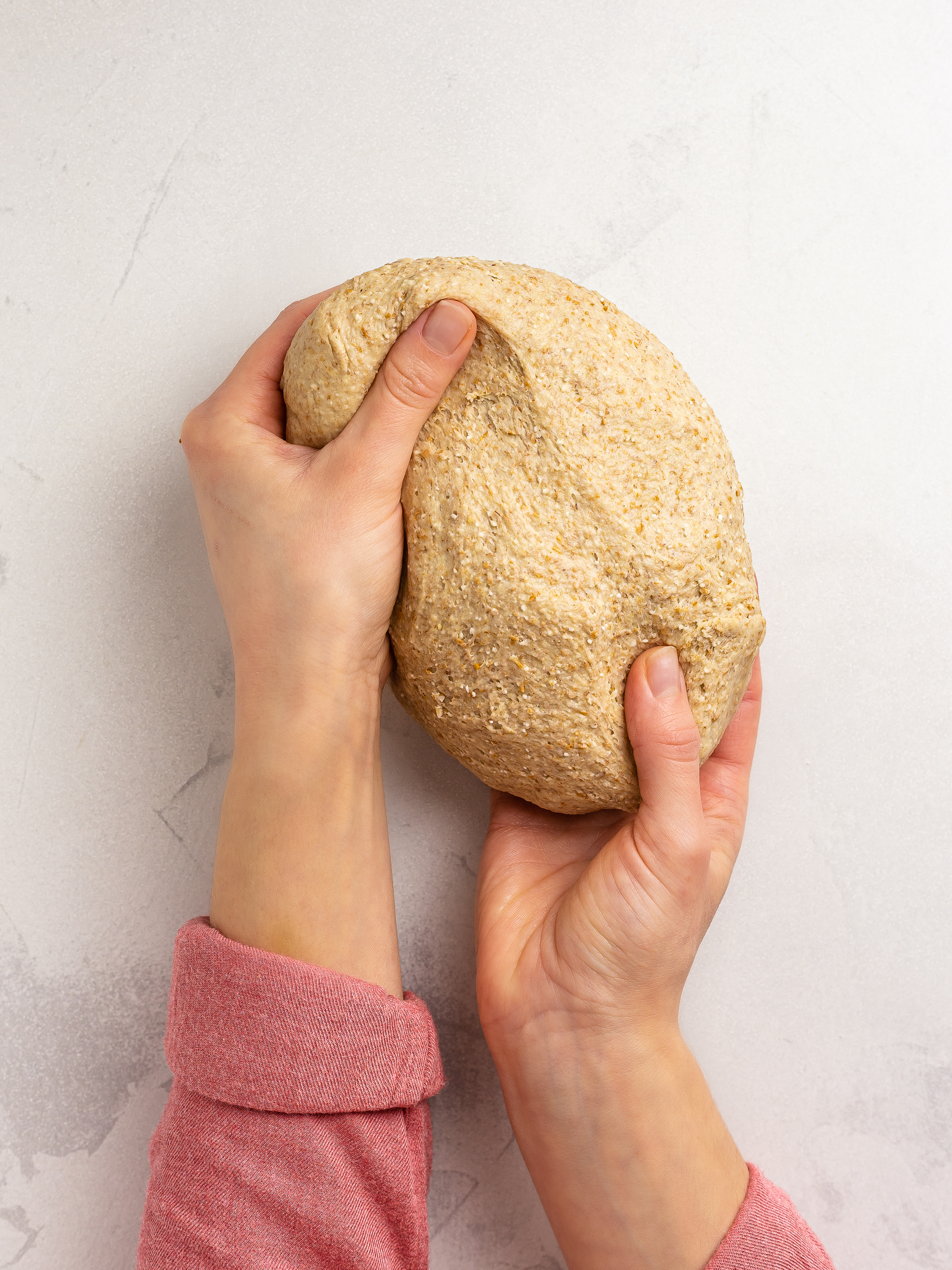
Step 4
Next, roll it into a ball, transfer it into a greased bowl, and wrap it in cling film.
Place the bowl in a warm place — for example, wrapped in a wool blanket or next to a heater, and leave it to prove for one hour until doubled in volume.
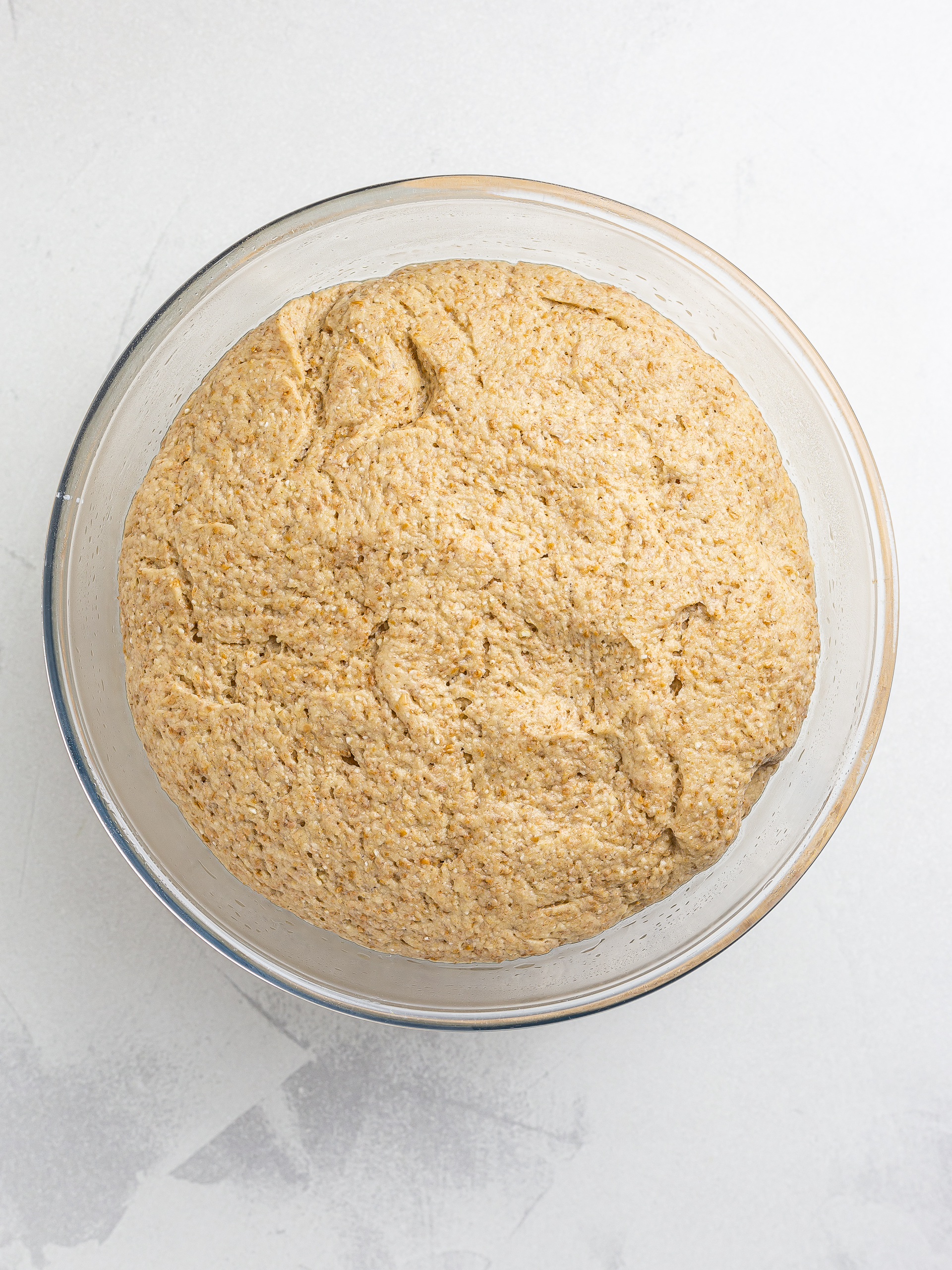
Step 5
Now, divide the dough into 12 pieces, about 130g (4.5 oz) each, or as many pieces as the number of servings.
To shape each rusk, pull and tuck the sides of the dough underneath to form a tight and smooth ball. Then, flatten it down to a 9-10 cm (3.5-4 inches) patty, about 2.5 cm (1 inch) thick (1).
Next, use a sharp knife or cake wire to slice the rusk horizontally, without separating the two halves (2).
Check out our FAQ section for more tips and options on how to slice the rusks.
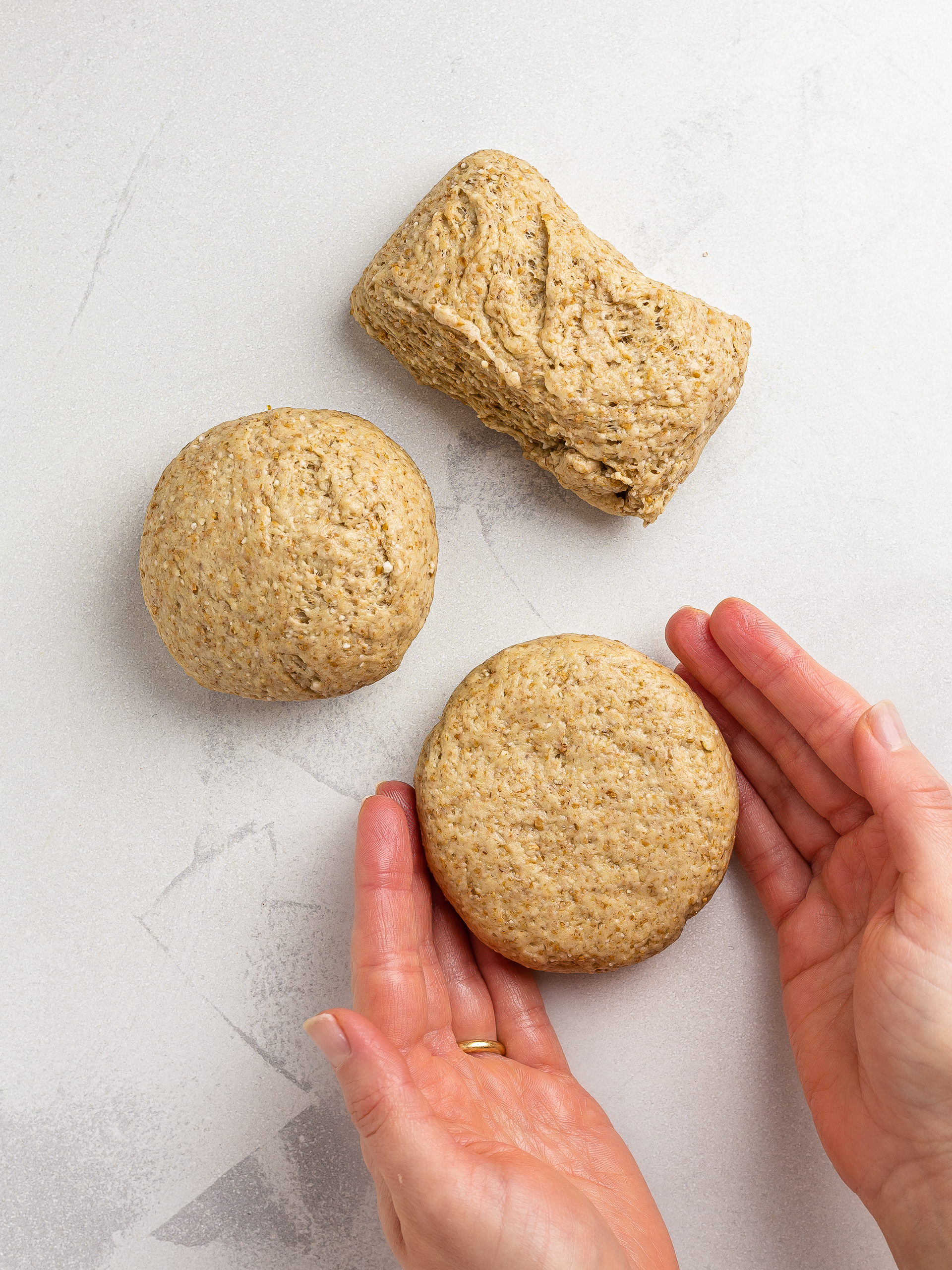

Step 6
Place the prepared rusks onto a baking tray lined with parchment paper. Then, lightly brush them with olive oil and wrap the tray with cling film (1).
Make sure to leave some space between each patty as they will expand during the second proving.
Leave the rusks to prove in a warm place for a further 30 minutes (2).
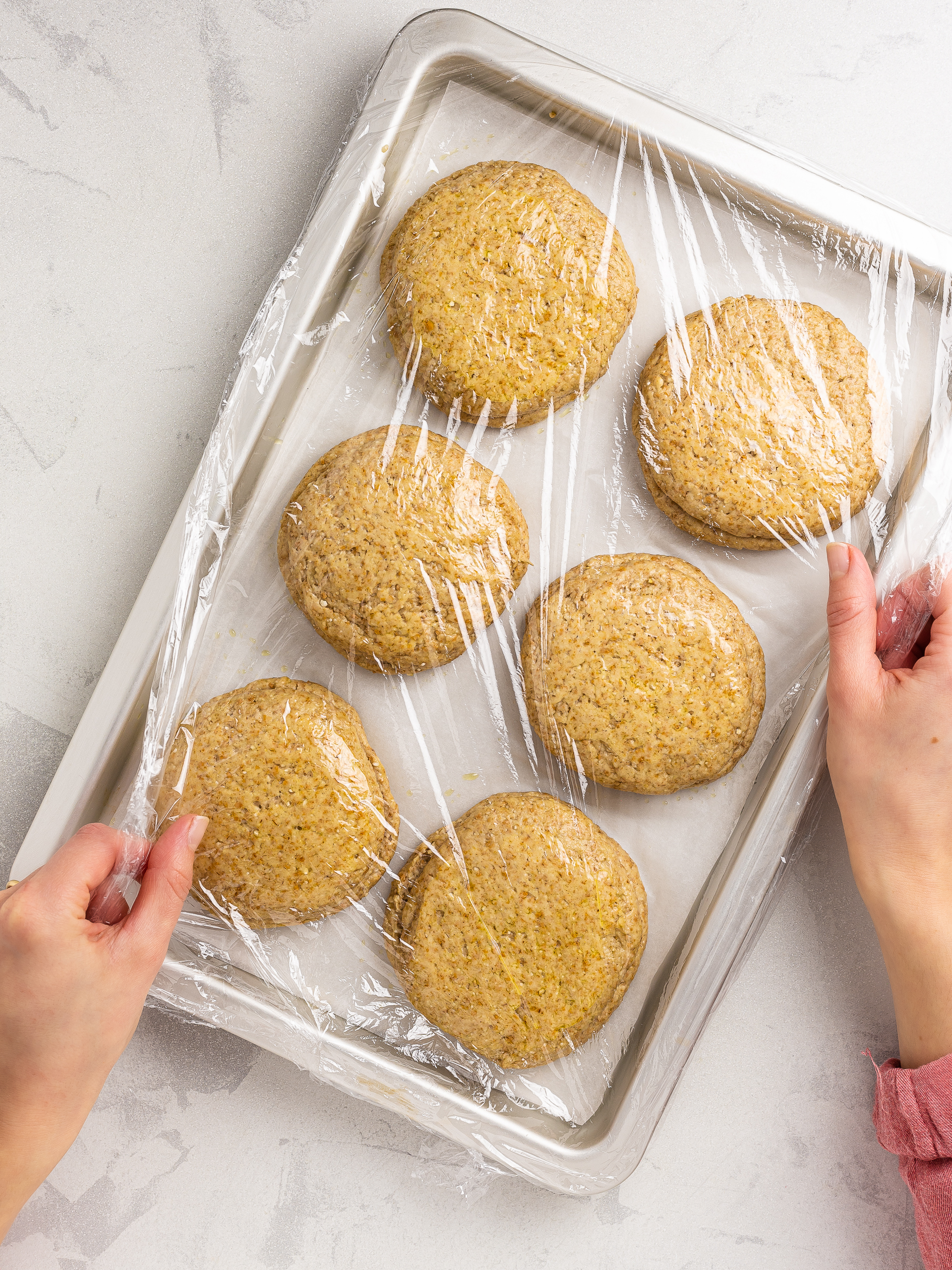
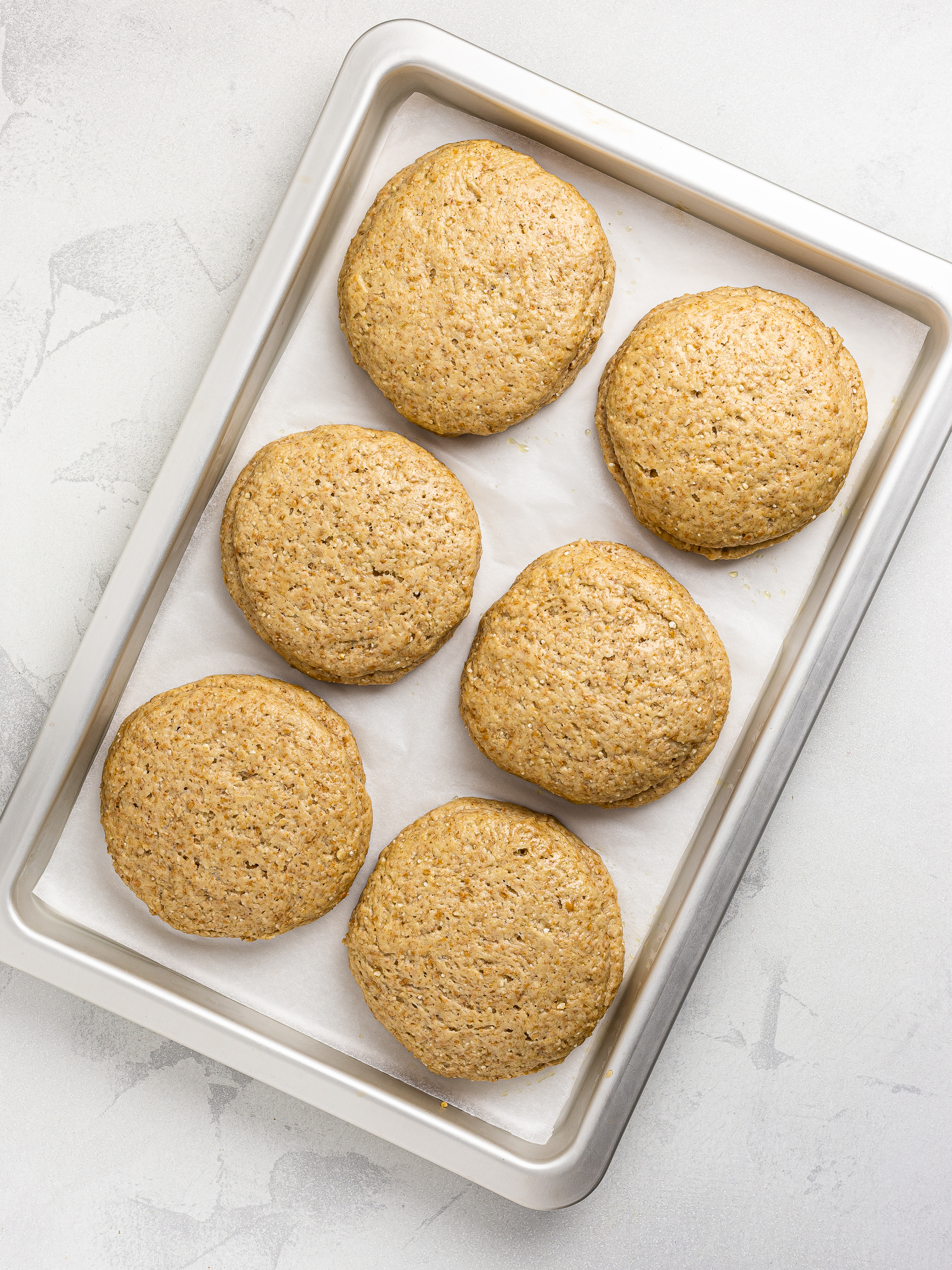
Step 7
Bake the proved rusks at 180°C (355°F) in static mode for one hour and then transfer them onto a wire rack (1).
When they're cool enough to handle, use a knife to cut them in half where you have previously scored them (2).
Separate the top from the bottom and put the rusk halves back on the baking tray.
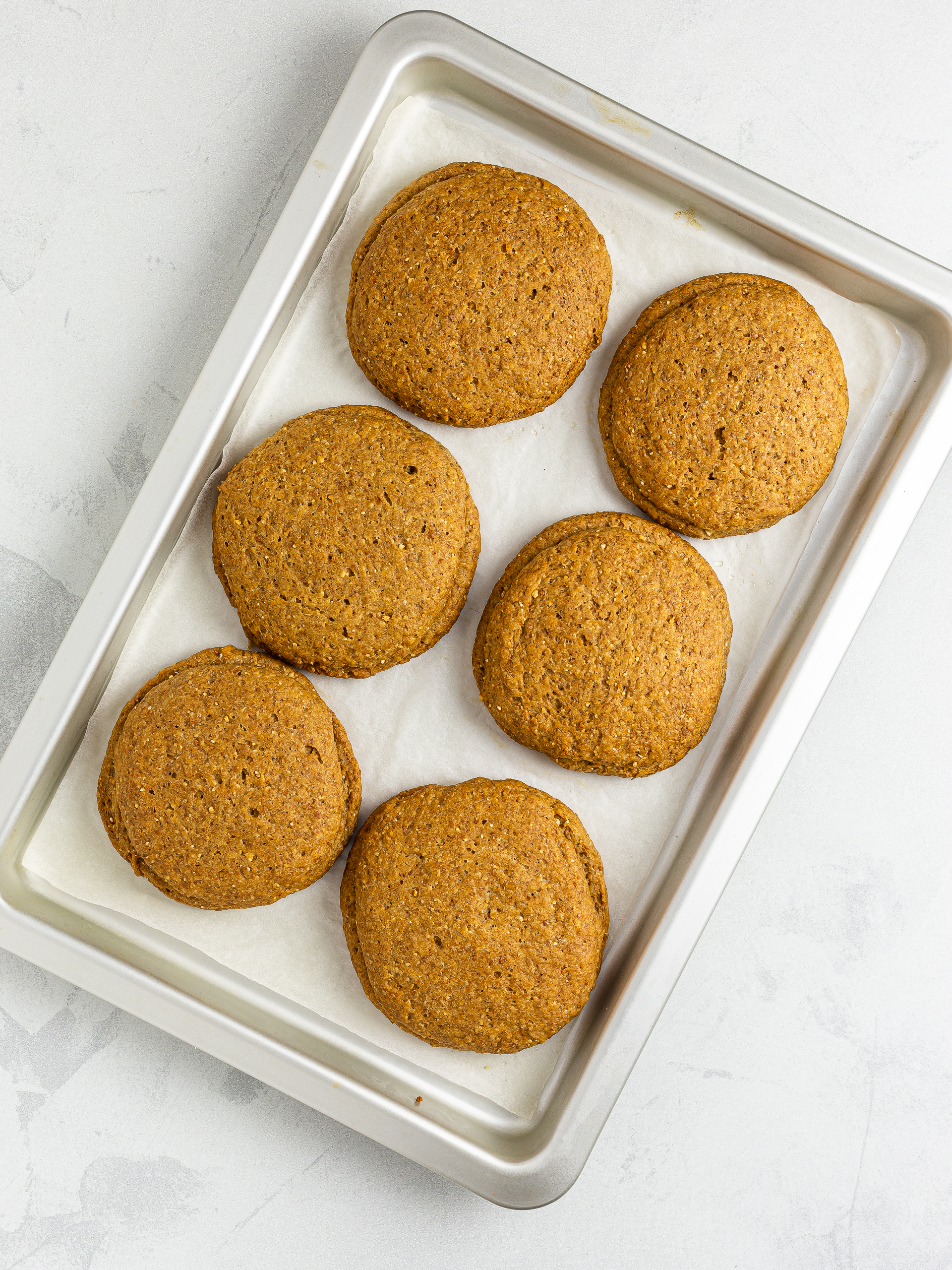

Step 8
Finally, bake the rusks at 120°C (250°F) in static mode for a further 2 hours.
Then, leave them to cool down and harden on a wire rack before serving.

Tips
You can spice up the rusk dough with black pepper, ground coriander, and ground aniseed.
